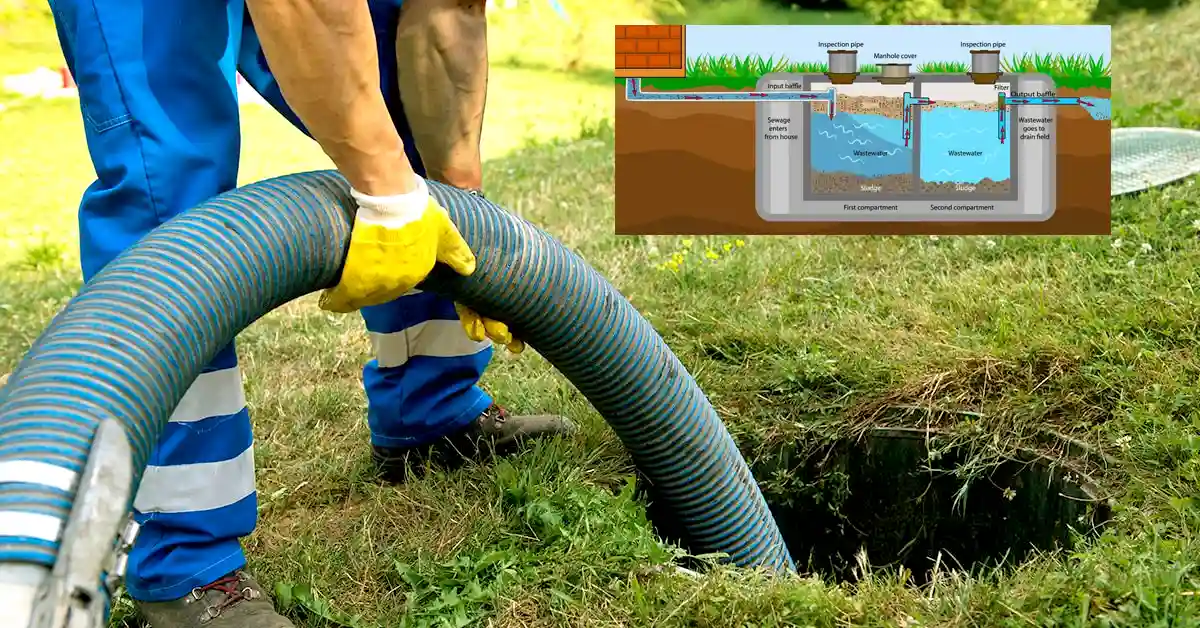When it comes to wastewater treatment, municipal systems handle the job seamlessly, but what happens if you're relying on a septic tank? Unlike citywide sewer systems, septic systems are self-contained and require maintenance to keep them running smoothly. In this guide, we'll break down how septic tanks work, their components, how to care for them, and when to call the professionals for help.
What Is a Septic Tank?
A septic tank is an underground, watertight container designed to treat wastewater from your home. It collects solid waste from toilets, sinks, and other plumbing, breaking it down with the help of bacteria. The treated liquid, or effluent, then flows into a nearby drain field for further filtration into the soil.
How Deep Are Septic Tanks Buried?
Septic tanks are generally buried 4 inches to 4 feet underground, depending on the terrain, water table depth, and the lowest point of your outgoing sewer line.
The Mechanics of a Septic System
A septic system has four key parts:
- Sewer Drain: Carries wastewater from your home to the septic tank.
- Septic Tank: A watertight container that collects waste and begins the treatment process.
- Effluent Drain Pipe: Carries partially treated water from the tank to the drain field.
- Drain Field: A system of perforated pipes buried in the soil, where the treated effluent is dispersed and naturally filtered.
How a Septic Tank Works: Step-by-Step
- Wastewater Enters the Tank
All wastewater from your home (toilets, showers, sinks) travels to the septic tank via the home's plumbing system.
- Solids Settle to the Bottom
Solid waste sinks to the bottom, while oils and grease float on top, separated by a layer of liquid. Bacteria in the tank break down solid organic matter into sludge.
- Partial Water Treatment Occurs
As the bacteria process solids, the liquid water becomes partially treated effluent.
- Effluent Discharge
The partially treated effluent exits the tank through an outlet pipe and enters the drain field.
- Effluent Filters Through the Drain Field
In the drain field, effluent moves through perforated pipes and gravel, which filter the water further before it reaches the groundwater.
The Role of the Drain Field
The drain field plays a critical role in filtering out harmful germs and bacteria from the effluent. As the effluent moves through the soil, it’s naturally filtered, ensuring that dangerous pathogens don’t contaminate nearby water sources.
Signs of Septic System Problems
If your septic tank isn't functioning properly, you may notice the following signs:
- Wastewater backs up into toilets, sinks, or tubs.
- Slow drainage in sinks, showers, or bathtubs.
- Gurgling sounds from drains or pipes.
- Persistent standing water or damp spots near the tank or drain field.
- Unpleasant odors around the tank or drain field.
- Excessive growth of green, spongy grass over the tank or drain field.
- Elevated levels of nitrates or bacteria in nearby water wells.
- Algal blooms in nearby ponds or lakes.
Many modern systems have alarms that alert you to septic system issues.
How to Care for Your Septic System
To ensure your septic system runs efficiently, follow these best practices:
- Never flush kitchen grease, solid waste, or petroleum products into the septic tank.
- Avoid using harsh chemical cleaners, as they can disrupt the bacterial breakdown of waste.
- Never drive over the septic tank or drain field.
- Grow grass and shallow-rooted plants over the drain field, but avoid planting deep-rooted trees that can damage the system.
How Do You Know When Your Septic Tank Is Full?
If you notice any of the signs of septic tank issues mentioned above, your tank may need to be emptied. Typically, a well-maintained system should only need pumping every 2 to 3 years, depending on the size of the tank and household usage. Professionals like Roto-Rooter can pump out the sludge and prevent any further issues.
How Long Do Septic Tanks Last?
A septic tank can last between 20 to 40 years with proper care. Regular maintenance and timely pumping help extend its lifespan.
When to Call a Professional
If you notice any signs of septic tank malfunction, it's crucial to call a professional plumber immediately. Even minor issues can escalate into major problems, and working with sewage systems involves handling harmful bacteria and pathogens. A professional plumber has the training and equipment to safely address these problems and ensure your system operates efficiently.
Leave a comment
Your email address will not be published. Required fields are marked *


